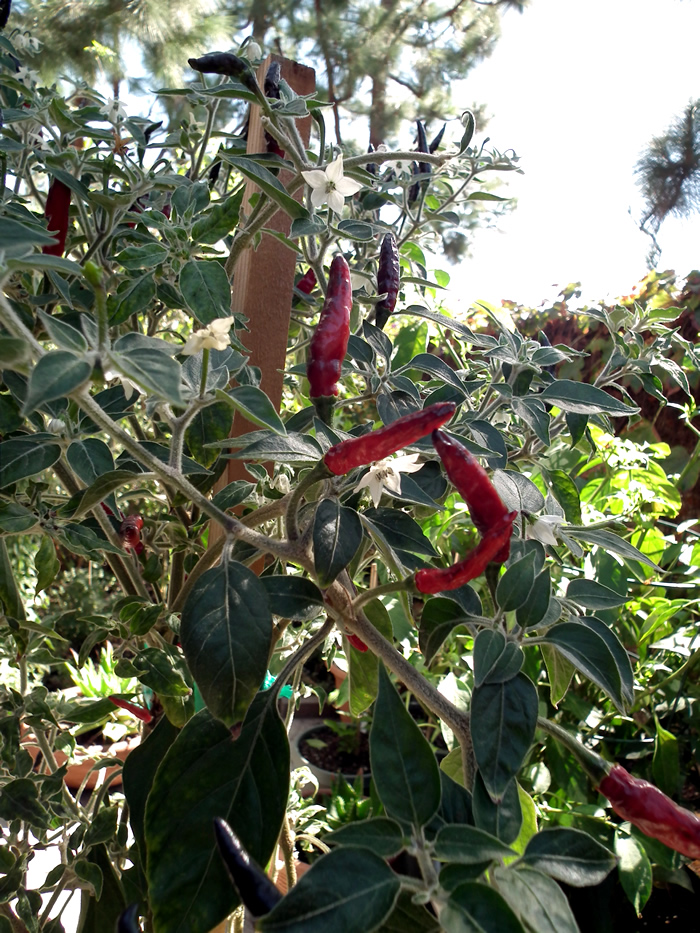
I love hot peppers, and am cultivating a growing population of 9+ plants. I find that there’s something very special and beautiful about them. Aside from just admiring them, I also love to eat their fruit! Pickled peppers are a lot like wine. Each one of them yields a unique and deep flavor. The longer they pickle the more sophisticated the flavor becomes.
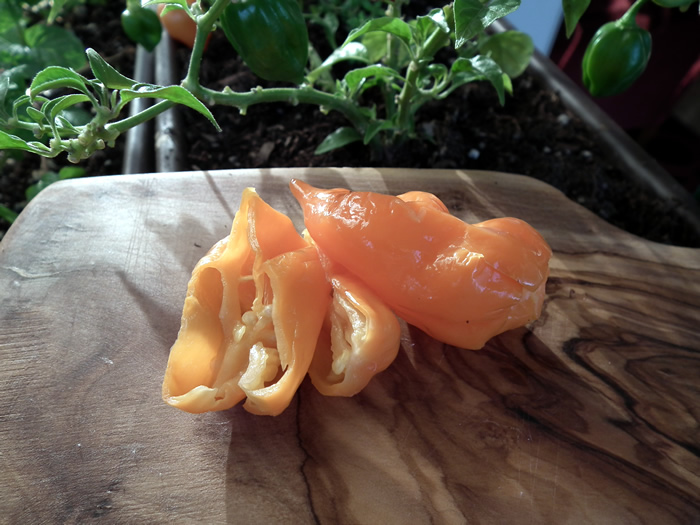
-A Habanero fermented for three weeks
Hot peppers have the highest concentration of Vitamin C of any food popularly consumed. They contain 357% more than an orange. With winter setting in it seems like a good thing to eat, as well as keep you warm. Not that that means anything here in California, but I’m told that inhabitants of hot climates will regularly eat cayenne since it lowers the body’s internal temperature. Cayenne is the most popular pepper, this site has some very fascinating details about it, but all hot peppers high in capsaicin have such benefits.
In this recipe I’m going to use jalapeños (which are not hot but are used to give the hot sauce that Tabasco hot sauce flavor) and habaneros which are reportedly hot, but only mildly hot for me since I’ve been regularly consuming them, and have gotten used to them.
I get them from the local farmers markets, which are the best source for unique pepper varieties.
The mom of the family that grows and sells them eats them like candy. She can’t remember the last time she’s been sick. She credited this to her habanero consumption. The peppers from them are fresh picked, organically grown, some are as long as two inches, are very crisp, and… potent.
If you’re in the Irvine area and looking for good hot peppers I recommend them.
They are always at the Saturday morning farmers market in Irvine. Look for a Mexican family, second stand to the left next to oranges. The first row close to the mall center/stores. They sell primarily vegetables, melons, and lots of strawberries pretty much all the time.
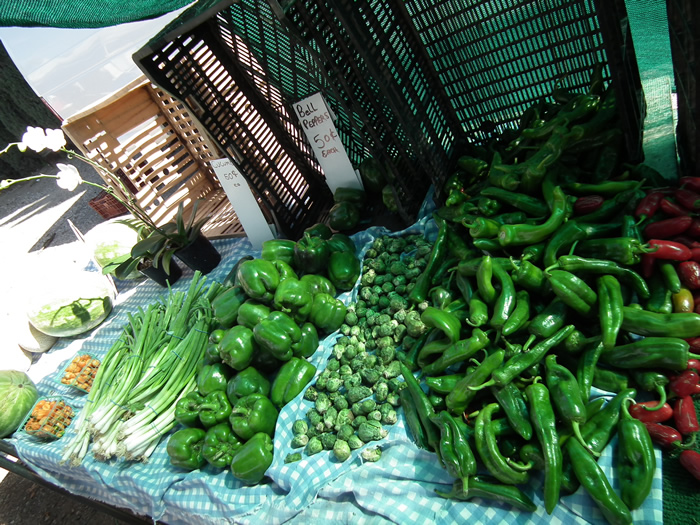
You Will Need:
*Fresh Jalapeños (They really do add a nice aroma, try them alone if you want a non-hot version.)
*Fresh Habaneros (You can use any other fresh hot pepper.)
*Brine: Mix 1 heaped tablespoon of a mineral rich good sea salt, like celtic sea salt, per quart water.
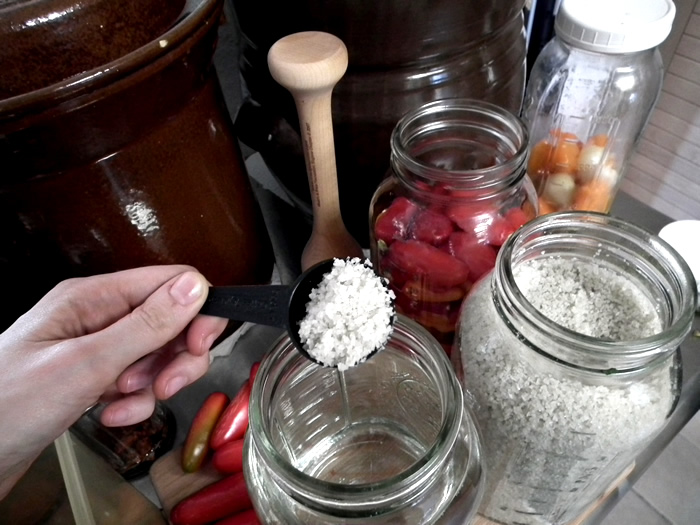
*An optional starter to kick off the fermentation (The water of other raw lactofermented vegetables, but just brine is enough.)
*Air tight glass containers (Like glass jars with a rubber gasket.)
*Fermentation weight (To place over the ingredients in the jar when you’re done. This keeps everything below the water to prevent kahm yeast from growing.)
As a side note on Kahm Yeast:
If you spot any white yeast growing on the surface, don’t worry. Yeasts play an important roll during lactofermentation. That yeast is called Kahm yeast, it looks white, velvety, and powdery. It is a harmless aerobic organism. Although harmless, Kahm yeast is something you DON’T want to let overgrow since it affects the flavor of what you are fermenting. Kahm yeast is typically caused by under salting, or exposure to air. If you keep your jars clean, add enough salt so the brew is sufficiently acid (primarily when it’s started), and the jars used are air tight then it won’t happen.
If you see it scoop it off the surface and add more brine (salt water made with a stronger solution of sea salt this time).
Kahm yeast is often cultivated for a yeast starter… as in cultivating it for beer, ale, or bread (if you add some sugar water the yeast will grow and you would have your own house yeast starter).
*Mixing bowl, knife, or (in the case of Recipe #2 a food processor and mixing bowl.
*And Optional medical exam gloves… If you’ll be pounding down the vegetables with your bare hands… they will most likely burn if you’re not used to handling hot chiles.
The Recipes!
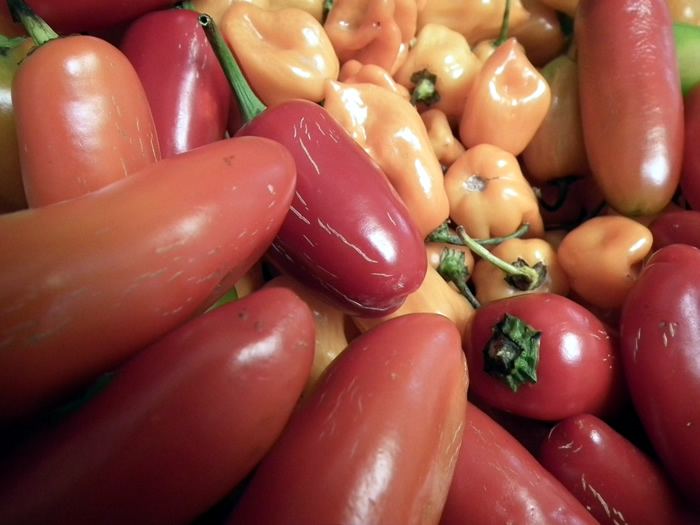
RECIPE #1:
*Cut Chiles (just make sure the skin is pierced so water enters them)
*Layer them tight in your jar
*Routinely pound, press, and lovingly squash them down
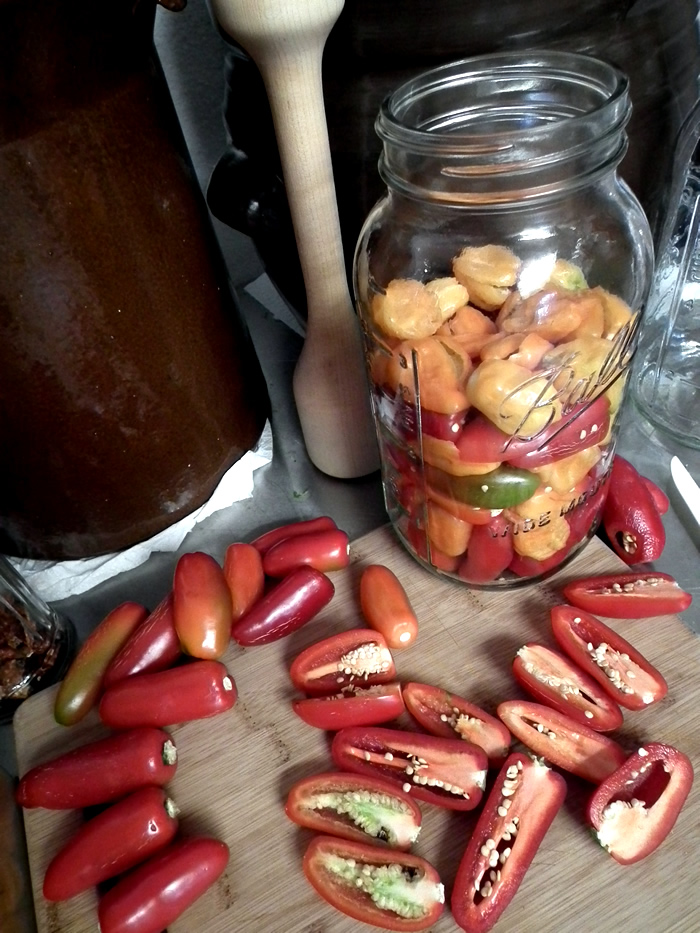
*Filling up the jar leaving 2+ inches space at the top (don’t overfill else you’ll have a problem with water spilling out later)
*Pour in the brine and optional starter
*Place fermentation weights on the top
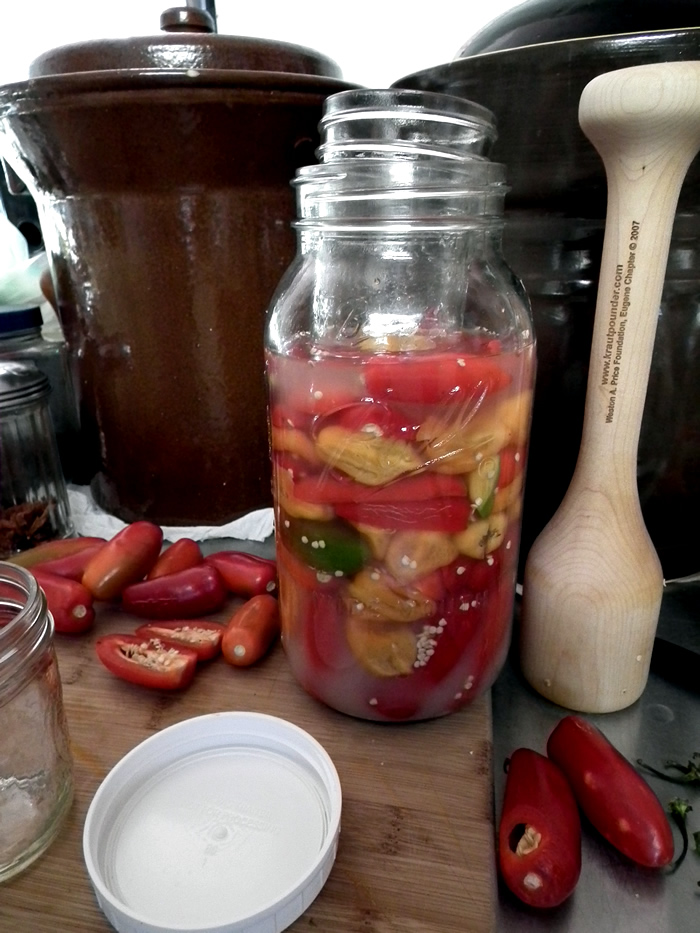
*Seal the container
*Place in a dark place to ferment (I use a food dehydrator)
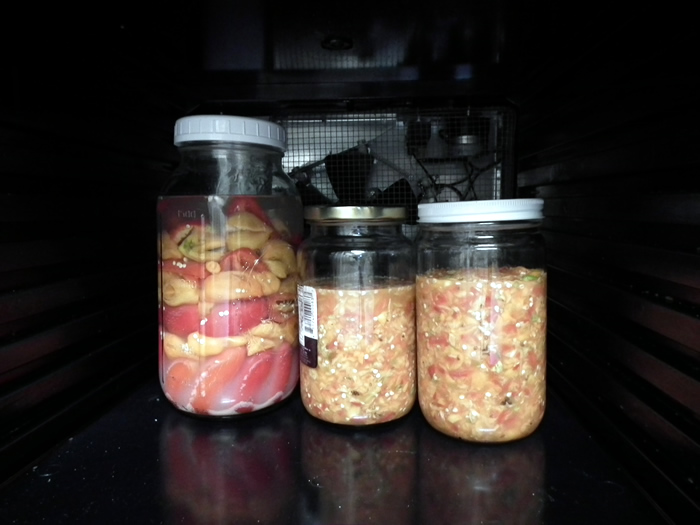
*Let it stand for 2+ weeks. The longer the better!
Don’t open the jar, it needs to stay sealed during fermentation.
*But peek in regularly to monitor their progress.
When it’s finished blend it up and enjoy as your very own world-famous hot sauce! …Or try slicing the peppers up and add them to any food, like nori rolls. The water in itself is hot enough to drizzle on things as a fun spice. It’s a great condiment that can go a long way.
RECIPE #2:
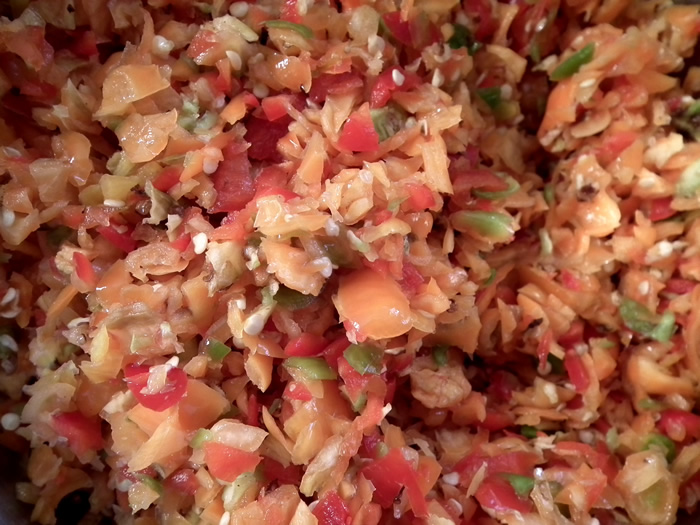
In a food processor…
*Grind up the hot peppers
In a mixing bowl…
*Mix hot peppers with the brine and optional starter
*Place the mix in jars making sure they both have an equal amount of brine.
Brine should be at an equal level or just above the pepper mix.
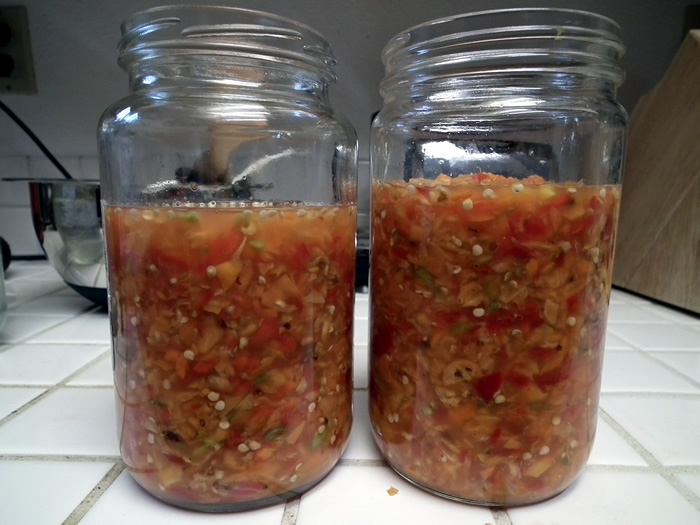
*Seal containers and place in a dark place to ferment

*Let it stand for 5+ days. In this case you can eat it much sooner than the other recipe because the peppers are diced.
*Check regularly to view their progress, but don’t open the jar, it needs to stay sealed during fermentation.
*Water separation is normal… When it’s done, just mix before you eat.
Although this version is much faster it is also more susceptible to the notorious white yeast. This is because a lot of the vegetables are floating on the surface. If this happens just scoop it, and the affected vegetables off, and refrigerate.
There you have it. Two versions of a hot monster.
Try these recipes with different chile varieties, throw in garlic for another nice flavor, or herbs like rosemary…
In the case of Recipe #2 you can dice the chiles up with Salsa ingredients and lactoferment your own super hot Salsa… or a seriously wicked spicy Ajvar.
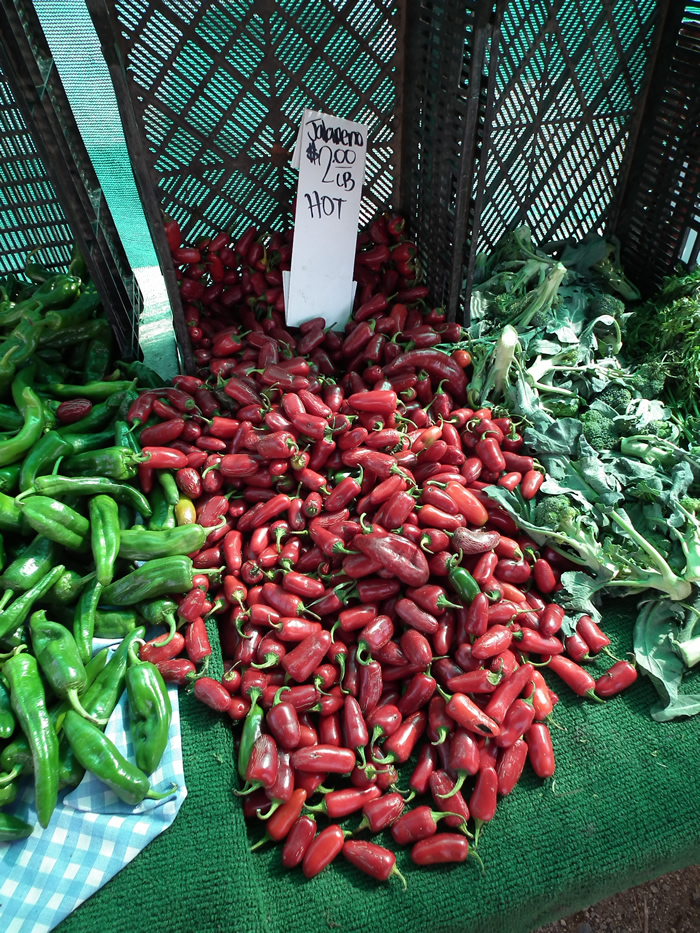
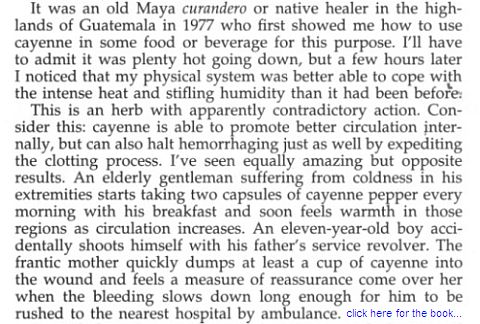
love your web site! thanks for the info on your pepper,s
you seem well rounded piece and love from mars….!!
Why thank you, good sir. :)
Great insight! That’s the answer we’ve been liookng for.
Excellent! I’m going to try this.
Jalapeños not hot? On whose planet?
Salt is an alkali, not an acid.
In my opinion Jalapenos are not hot, no. :)
Re: Salt – I think I was referring to the entire brew, and what takes place as it ferments (it’s been a while since I wrote this, I see that’s it’s pretty unclear). If you add more salt it reduces the yeast growth (more salt = less or no yeast).
Thanks for the tips!
I’m fermenting both Trinidad Scorpion and Bhut Bolokia peppers I’ve been growing since the spring. Question:
What can I use to weigh down the peppers aside from cheesecloth? Any substitutes?
Thanks
Briner in Cleveland
I suggest using anything glass, or porcelain. I heard that plastic can leach, but I can’t back that up with any facts. I just prefer those two.
I often use a few cabbage leaves, and tightly tuck everything under them when the container is full. Sort of like a cabbage leaf blanket. The cabbage should stay in place & keep small pieces from rising to the top. Then I put a small glass jar, or small porcelain thing over the cabbage leaves to further press it down.
Cabbage leaves should also help the fermentation. Note that all the peppers + cabbage must be covered in the salt water. Anything sticking out can ferment not-so-properly…
Hey y’all. Been making habenero sauce by weighing peppers and salting 2% of that weight and covering in water. Does anyone have a way to fight yeast other than sanitation and keeping sealed? More salt? Herbs? The yeast gets in some batches and is unstoppable–otherwise my sauces are shelf stable.
When you open the jars to scrape off the yeast, aren’t you letting more air in? Confusing.
And, shouldn’t you burp the jars the first few days?
I just made my 1st batch of mash. I put a lid on it instead of using cheese cloth. Will this hinder my fermentation process?
Please email me thanks.
Lids are fine.
How do I remove the yeast before it gets too bad without opening the jars?
That’s funny..
Recognized Sbobet Indonesia Agent
Sbobet is a gambling company which was much in demand by the individuals
associated with Indonesia. Unfortunately,
choosing soccer gambling games on the web these days cannot
be done randomly because not all Sbobet Indonesia agents provide the particular same service even among those
who use the title of the Agent being a cover for committing crimes such as fraud, theft and embezzlement.
Of course because a fan of online gambling games you need to remain cautious and try hard to prevent these unwanted
losses. That is why, in this particular article, we want in order to give you a few
tips and tricks that will you can do so that you can continue to income while playing online wagering on the internet.
Qualities of Trusted Football Betting Providers
The most essential thing that you can know, specifically
for those of you who else are just beginning to become a member of are some criteria which a Sbobet Indonesia agent need to have so that it will end up being easier that
you should choose as a playing partner.
Listed here are some of the conditions that must be possessed by Sbobet Official
betting agents:
– Customer support or customer support of which is always active
twenty four hours a day.
– Game variants complete together with international standard products.
– Serve various methods of financial transactions and
can be done through leading nearby banks.
– Provides online games from various well-known businesses like Sbobet, Nova88, Maha168 as well as others.
– Do not really have a minimum or maximum limit to pay the winnings.
The 5 standards above are the particular minimum requirements that should be owned by a trusted online betting internet site.
So make sure the particular site you choose meets the five conditions previously mentioned.
Reasons for Choosing a Depobola Sbobet Agent Partner
Choosing a site amongst millions of agents which are
spread on the world wide web is not an easy trouble. It may take days as
well as months if an individual have to search for yourself, you will feel
tired one which just even start the game.
Therefore we all want to simplify your own work here so
a person can immediately play and obtain more benefits
from sportsbook games.
Depobola is a new site that connects on the internet gambling fans using a selection of international quality gambling games provided by trustworthy gambling service providers
such since Sbobet.
Official Sbobet Real estate agent Depobola has obtained an official license directly from the particular Sbobet provider to open access for prospective
customers to be able to all variants of the particular game which may
have been supplied.
Employing Depobola as a playing partner, players automatically get an abundant revenue that
players will never acquire from other Sbobet Philippines agent sites in Indonesia.
Here are some associated with the strengths of Depobola:
– Easy and Convenient Deposit Method
We have got collaborated with several well-known local banks in Philippines to ensure that
the deposit may be done comfortably and safely. Players also perform not need to help to
make a deposit in overseas currency because we furthermore
accommodate customers who make deposits in rupiah.
If the player is not comfortable setting up a deposit through a new bank account
you have, the particular Player does not want to worry since there
are other deposit options that gamers can do, namely through OVO payment services.
The particular minimum deposit is also low so the player doesn’t need to hesitate in order to try first playing with Depobola.
– Seductive Bonuses and Promos
The advantage of which players can get along with
Depobola is not only from winning hanging around nevertheless also
bonuses and promos provided solely for the benefit of loyal members that have chosen us since playing partners.
– Effortless and Fast Registration
Getting an official member via Depobola is very simple, it
takes only a few moments, you can immediately sign up for the game.
All you need to do is usually click on the “REGISTER”
button at the top of this specific page.
Not unaccompanied as the best Asian gambling operator in the 2009 and 2010 versions of
eGaming evaluation Magazine, but the online gambling site Sbobet has then become the 11th
most ranked company in the “50 faculty Company” list in 2011 which is
the list of the most influential companies in the eGaming industry.
This is proof that Sbobet is not an online gambling site.
For starters, Sbobet is the best online bookie to operate Asian Handicap because
here you can choose both the type of bet and the odds you want.
Compared to competitors such as Dafabet and 188Bet,
Sbobet has the most incredible in-play betting serve
in the same way as living video streaming features for several tournaments
and well-liked matches in the middle of faithful customers.
up to standard and thank you for visiting online casino agents for Indonesia.
Here we are here to give access for fans of
sbobet casino who want to link the international agent
site Promosbobet.
The products offered are utterly diverse and are categorically the best
choice. Derived from providers that have credibility and have been proven to have the best predicate in serving their customers.
Providers bearing in mind Sbobet, Maxbet
and many more.
As the best online casino and soccer gambling site in Indonesia.
We offer maximum help subsequent to customer keep that works online 24 full hours all day.
correspondingly members can play in whenever and wherever
without fearing to incline the possibility of difficulties or confusion.
In an age of increasingly hasty technology and growing popularity of online gambling,
no less than 100 agency sites are born all morning offering the best gambling products
for gambling game lovers regarding the world. Including
in Indonesia, various types of gambling games are presented through
many recognized agent sites.
One site that has emerged recently is Depoxito. Although it is new, it turns out that Depoxito
already has some of the best features prepared to create its customers willing including professional benefits and international suitable
game quality.
Tips for Choosing a new Gambling Site
Some players think that a extra site means no experience.
This suggestion may be true, but flying hours are not everything to be the best and most trusted online
gambling site. There are at least 5 important criteria that must be possessed by a extra
online gambling site to deserve to be called a site
as soon as a fine reputation.
For that, we will have the funds for some important tips for those of you who will choose a extra online gambling agent site to avoid cyber crime.
since deciding to pick a site, create distinct the site has the with four criteria.
Hello from the future.
Warning, 2020 sucks!